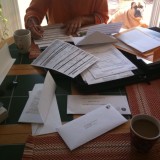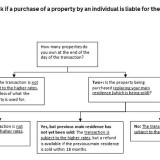The Short History of Stamp Duty
UK Stamp duty was introduced in 1694 as a way to raise money to pay for the war with France. It was supposed to be a temporary solution to raise money, but it was such a great way of getting money from the public that they kept it well after the war. It later became a permanent form of UK taxation.
The process originally involved physically stamping a document to confirm the tax had been paid on the property transaction. It doesn’t require a physical stamp any more but that’s where it got the name Stamp Duty. Stamp Duty basically stayed the same for over 300 years, it only changed in 2003. Now there are two types of Stamp Duty, Stamp Duty Land Tax and Stamp Duty on Shares.
Stamp Duty Land Tax (SDLT)
Stamp Duty Land Tax (SDLT) is a UK Tax that you’ll have to pay if you are buying a property or land in England, Wales and Northern Ireland. Even if you’re not a UK resident and live overseas, you still have to pay SDLT on property or land purchases within England, Wales and Northern Ireland. Sellers don’t have to pay any Stamp Duty.
You pay the UK Stamp Duty Land Tax (SDLT) when you:
- buy a freehold property
- buy a new or existing leasehold
- buy any land
- buy a property through a shared ownership scheme
- are transferred land or property in exchange for payment, eg you take on a mortgage or buy a share in a house
This applies to all purchases of houses, flats and other land and buildings but DOES NOT apply to Caravans, Houseboats and Social landlords (Charities).
Rates and Threshold
The rate of tax the buyer will have to pay is a percentage of the purchase price (rounded down to the nearest pound). UK Stamp Duty Land Tax (SDLT) is ONLY payable on property/land purchases over a certain price threshold (currently £125,000). Unless you’re buying your second property, then you’ll have to pay 3% regardless. Property purchases worth less than £40,000 never have to pay Stamp Duty Land Tax (SDLT).
To see the current rates, visit our Stamp Duty Land Tax Rates page. We also have a cool Stamp Duty Land Tax (SDLT) Calculator, so you can work out how much tax you’ll have to pay.
Stamp Duty Land Tax (SDLT) in Scotland
SDLT no longer applies in Scotland. If you buy a property in Scotland you’ll have to pay Land and Buildings Transaction Tax instead. This was introduced in April 1, 2015, to replace SDLT.
Stamp Duty on Shares
There’s also another type of Stamp Duty that applies to shares. If you buy shares worth more than £1,000, and the purchase is recorded on a stock transfer form, you’ll need to get the form stamped by HM Revenue and Customs (HMRC) and you must pay Stamp Duty (SD). For shares bought electronically, or without a stock transfer form, you’ll have to pay Stamp Duty Reserve Tax (SDRT).
But this has nothing to do with Conveyancing, so if you want to know more visit: https://www.gov.uk/guidance/stamp-duty-on-shares







